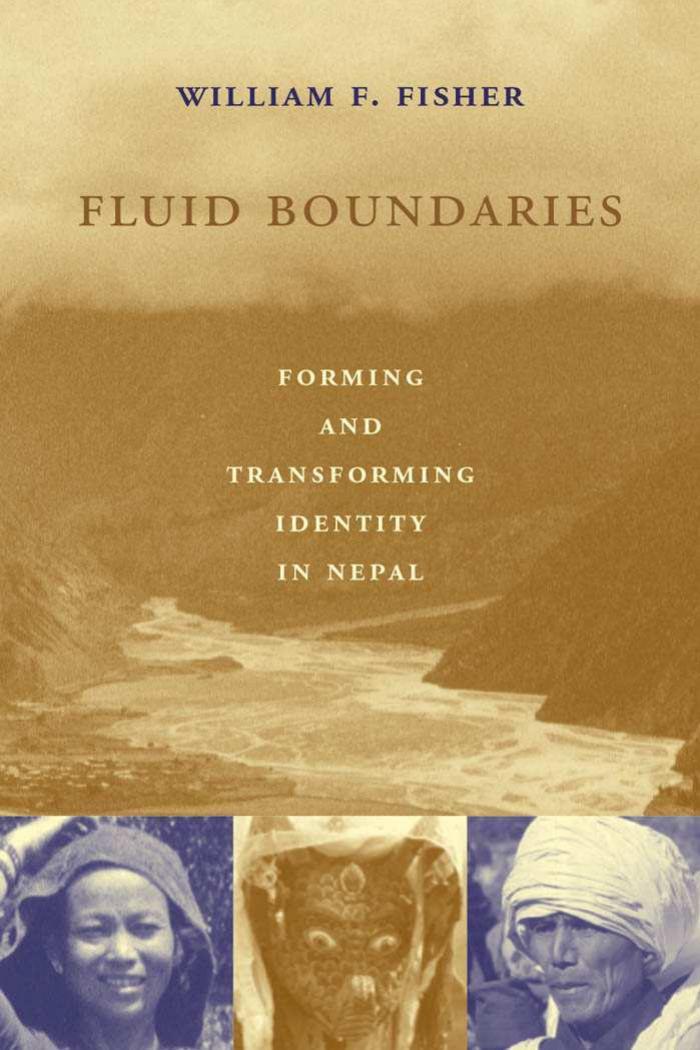Fluid Boundaries by William F. Fisher

Author:William F. Fisher [Fisher, William F.]
Language: eng
Format: epub, pdf
Published: 2011-02-17T05:00:00+00:00
Butwal
110
2
55
1
Baglung
253
2
127
2
Jilla
Myagdi
280
2
140
3
Jilla
Palpa Jilla
21
1
21
with Butwal
Syangja
27
1
27
with Pokhara
Jilla
Parbat Jilla
55
1
55
1
Chitwan
20
1
20
1
Jilla
Nepalgunj
12
1
12
1
Dhanghadi
8
1
8
1
Gulmi
53
–
–
1
Totals
1406
25
626
19
central committee, and the nomination of individuals for the central committee proceeded quietly and amicably. There were no dissenting votes; all elections of representatives and officers were unanimous.11
The Thakali Sewa Samiti was established as an association for “all Thakali,” and the question “Who is Thakali?” was clearly and narrowly defined by the statement that a Thakali is an individual who belongs to one of the four Thakali clans: Sherchan, Bhattachan, Gauchan, and Tulachan; all others identifying themselves as Thakalis were thus explicitly excluded from membership in the association.
The association was established with two representative bodies: a general assembly and a central committee. A greater share of the representation to Codifying Culture
155
the sixty-one–member general assembly and the twenty-five–member central committee was drawn from rural areas than was originally proposed by the ad hoc planning committee (see tables 6.1 and 6.2). The result of this re-apportionment was a relative reduction in the influence of both the subba group and Thakali living in urban areas.
The delegates also effectively formalized the loss of real authority by the traditional council composed of the thirteen headman of the Thaksatsae council. Until 1983 the relationship of the council of thirteen headmen and the local associations in migrant communities had been unclear. In the early part of the century migrant communities had often looked to the council of thirteen headmen for guidance on cultural issues but had avoided the political influence of the council. In the 1960s many of the wealthy merchant families who had controlled the council in the previous decades migrated to urban areas, where they set up competing institutions like the Pokhara and Kathmandu samaj associations. Despite the diminution of influence t a b l e 6 . 2 Representation to the General Assembly, 1983
Locale
Proposed by planning committee
Approved by delegates
Thaksatsae
18
8
Pokhara
17
7
Kathmandu
17
7
Bhairawa
11
5
Butwal (Kasauli)
10
6
Baglung District
7
5
Myagdi District
8
5
Palpa District
2
1
Syangja District
3
2
Parbat District
4
2
Chitwan District
3
2
Nepalgunj
2
1
Dhanghadi
2
1
Pyutan
0
1
Totals
104
53*
*Eight additional members were chosen at large, for a total of 61.
Download
This site does not store any files on its server. We only index and link to content provided by other sites. Please contact the content providers to delete copyright contents if any and email us, we'll remove relevant links or contents immediately.
The Vikings: Conquering England, France, and Ireland by Wernick Robert(79864)
Ali Pasha, Lion of Ioannina by Eugenia Russell & Eugenia Russell(40129)
The Conquerors (The Winning of America Series Book 3) by Eckert Allan W(37103)
The Vikings: Discoverers of a New World by Wernick Robert(36906)
Cecilia; Or, Memoirs of an Heiress — Volume 1 by Fanny Burney(32409)
Cecilia; Or, Memoirs of an Heiress — Volume 3 by Fanny Burney(31815)
Cecilia; Or, Memoirs of an Heiress — Volume 2 by Fanny Burney(31789)
Empire of the Sikhs by Patwant Singh(22957)
The Secret History by Donna Tartt(18802)
Hans Sturm: A Soldier's Odyssey on the Eastern Front by Gordon Williamson(18453)
Cat's cradle by Kurt Vonnegut(15145)
Pimp by Iceberg Slim(14307)
Sapiens: A Brief History of Humankind by Yuval Noah Harari(14208)
Talking to Strangers by Malcolm Gladwell(13181)
Norse Mythology by Gaiman Neil(13167)
Leonardo da Vinci by Walter Isaacson(13139)
4 3 2 1: A Novel by Paul Auster(12260)
Underground: A Human History of the Worlds Beneath Our Feet by Will Hunt(11996)
The Radium Girls by Kate Moore(11896)
